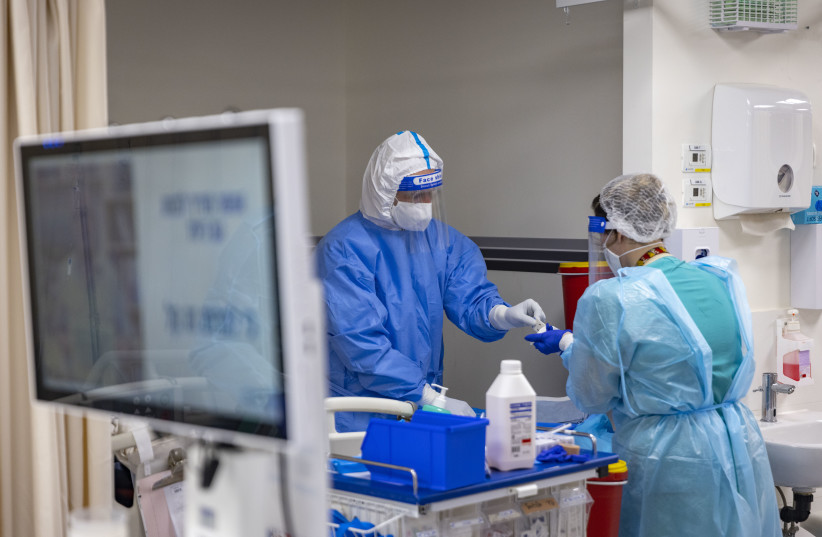Over the last two years of the coronavirus pandemic, there’s been a glaring spotlight on the country’s medical care.
The doctors, nurses and medical personnel who were thrust into nonstop service to deal with the unprecedented number of serious cases of COVID-19 and attempt to save the more than 8,000 Israelis who have succumbed to the virus have been nothing short of superhuman in their efforts.
We all owe them a huge debt of gratitude, especially when it becomes apparent that they’re working at a huge disadvantage.
The Health Ministry this week released data compiled by the Organization for Economic Co-operation and Development (OECD) on where Israel stands among developed nations in taking care of its sick and infirmed. And it does not look good.
As Shira Silkoff reported on Tuesday, the data compares 2019 information compared to 2010, and the Health Ministry pointed out that since the pandemic Israel’s healthcare system has undergone significant changes that are expected to impact several factors in future OECD reports.

Still, in the period covered, it’s clear that there are some worrisome deficiencies in our health system.
The OECD average for the number of doctors per 1,000 people is 3.69, Israel falls short at just 3.29. Countries including Australia, Italy and Norway all rank above average. However, to be fair, the US, the UK and Canada placed lower than Israel, with 2.64, 2.74, and 2.95, respectively.
The nursing situation in the country is even more dismal. While the OECD average is 9.4 per 1,000, as of 2019, Israeli data showed only five nurses per 1,000 people on average, a slight increase from the reported 4.7 in 2010, but still far below the average. Israel ranks at about the same level only as Mexico, Greece and Latvia.
Manpower isn’t the only thing lacking in the Israeli health system, however. An average of three hospital beds is available per 1,000 people in Israel, in comparison to the OECD average of 4.4 beds per 1,000. The number drops to just 2.2 beds per 1,000 people in acute care units in comparison to the OECD average of 3.5, and to just 0.4 against the OECD average of 0.7 beds per 1,000 in psychiatric care units.
Turning to equipment, Israel is also well below average OECD levels.
All of these deficiencies could stem from the statistic that only 7.5% of Israel’s GDP goes to the healthcare sector each year, compared to the OECD average of 8.9%. In addition, Israel was second to lowest of all OECD countries when it came to graduating medical students, with 7.2 medical graduates recorded per 1,000 people, almost half of the OECD average of 13.1 per 1,000.
It’s clear that the country needs more doctors. Some 60% of all doctors who receive their medical licenses in Israel are trained abroad, well above the OECD average of 18%.
Last October, the government acknowledged the acute shortage of doctors by approving the establishment of a committee to ease the immigration process for doctors, nurses and other healthcare workers, in order to overcome the manpower shortage in the health sector. But more needs to be done.
About half of Israel’s doctors are over the age of 55, with only Italy recording a higher proportion of aging physicians. In the OECD’s 36 countries, 34% of doctors are over 55.
The professionals that Israel is counting on to replace them are not being treated well. Late last year, more than 2,500 interns – the future backbone of the medical profession in Israel – delivered resignation letters to the Health Ministry in protest of their workload and 26-hour shifts. The issue was eventually resolved, improving the interns’ conditions. But it shouldn’t have to take a mass walkout to achieve a just solution.
There’s not a person in the country that doesn’t rely on the healthcare system to provide the best care possible. Especially with the coronavirus pandemic entering its third year, Israel must do more to shore up the country’s health services, invest more in vital equipment and in training quality doctors who won’t end up burning out by having to work round-the-clock shifts and raising our health standards to at least the average among OECD standards.
